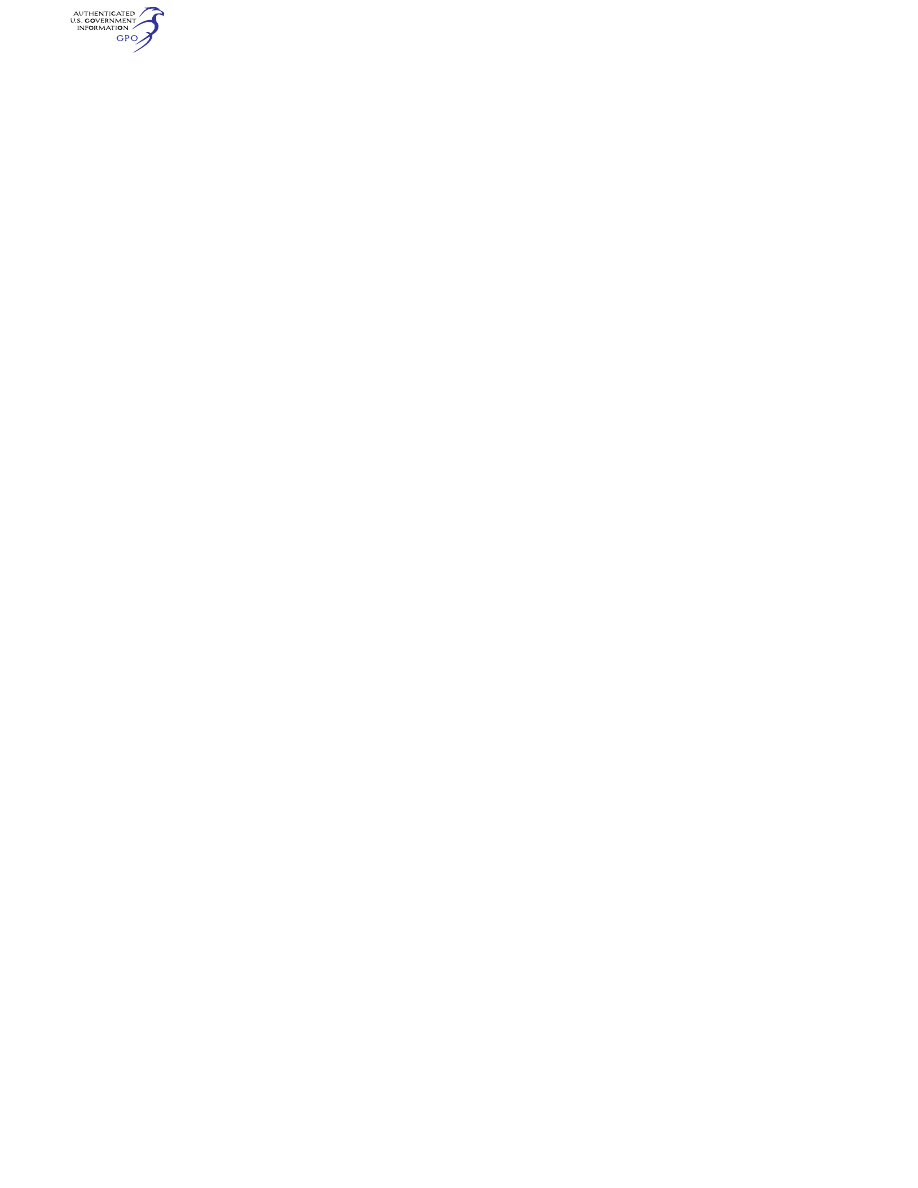
663
Federal Aviation Administration, DOT
§ 29.1385
designed to de-energize and disconnect
faulty power sources and power trans-
mission equipment from their associ-
ated buses with sufficient rapidity to
provide protection from hazardous
overvoltage and other malfunctioning.
(c) Each resettable circuit protective
device must be designed so that, when
an overload or circuit fault exists, it
will open the circuit regardless of the
position of the operating control.
(d) If the ability to reset a circuit
breaker or replace a fuse is essential to
safety in flight, that circuit breaker or
fuse must be located and identified so
that it can be readily reset or replaced
in flight.
(e) Each essential load must have in-
dividual circuit protection. However,
individual protection for each circuit
in an essential load system (such as
each position light circuit in a system)
is not required.
(f) If fuses are used, there must be
spare fuses for use in flight equal to at
least 50 percent of the number of fuses
of each rating required for complete
circuit protection.
(g) Automatic reset circuit breakers
may be used as integral protectors for
electrical equipment provided there is
circuit protection for the cable sup-
plying power to the equipment.
[Doc. No. 5084, 29 FR 16150, Dec. 3, 1964, as
amended by Amdt. 29–24, 49 FR 44440, Nov. 6,
1984]
§ 29.1359
Electrical system fire and
smoke protection.
(a) Components of the electrical sys-
tem must meet the applicable fire and
smoke protection provisions of §§ 29.831
and 29.863.
(b) Electrical cables, terminals, and
equipment, in designated fire zones,
and that are used in emergency proce-
dures, must be at least fire resistant.
(c) Insulation on electrical wire and
cable installed in the rotorcraft must
be self-extinguishing when tested in ac-
cordance with Appendix F, Part I(a)(3),
of part 25 of this chapter.
[Doc. No. 5084, 29 FR 16150, Dec. 3, 1964, as
amended by Amdt. 29–42, 63 FR 43285, Aug. 12,
1998]
§ 29.1363
Electrical system tests.
(a) When laboratory tests of the elec-
trical system are conducted—
(1) The tests must be performed on a
mock-up using the same generating
equipment used in the rotorcraft;
(2) The equipment must simulate the
electrical characteristics of the dis-
tribution wiring and connected loads to
the extent necessary for valid test re-
sults; and
(3) Laboratory generator drives must
simulate the prime movers on the
rotorcraft with respect to their reac-
tion to generator loading, including
loading due to faults.
(b) For each flight condition that
cannot be simulated adequately in the
laboratory or by ground tests on the
rotorcraft, flight tests must be made.
L
IGHTS
§ 29.1381
Instrument lights.
The instrument lights must—
(a) Make each instrument, switch,
and other device for which they are
provided easily readable; and
(b) Be installed so that—
(1) Their direct rays are shielded
from the pilot’s eyes; and
(2) No objectionable reflections are
visible to the pilot.
§ 29.1383
Landing lights.
(a) Each required landing or hovering
light must be approved.
(b) Each landing light must be in-
stalled so that—
(1) No objectionable glare is visible
to the pilot;
(2) The pilot is not adversely affected
by halation; and
(3) It provides enough light for night
operation, including hovering and land-
ing.
(c) At least one separate switch must
be provided, as applicable—
(1) For each separately installed
landing light; and
(2) For each group of landing lights
installed at a common location.
§ 29.1385
Position light system installa-
tion.
(a)
General. Each part of each posi-
tion light system must meet the appli-
cable requirements of this section and
each system as a whole must meet the
requirements of §§ 29.1387 through
29.1397.
VerDate Sep<11>2014
09:06 Jun 28, 2024
Jkt 262046
PO 00000
Frm 00673
Fmt 8010
Sfmt 8010
Y:\SGML\262046.XXX
262046
jspears on DSK121TN23PROD with CFR

664
14 CFR Ch. I (1–1–24 Edition)
§ 29.1387
(b)
Forward position lights. Forward
position lights must consist of a red
and a green light spaced laterally as
far apart as practicable and installed
forward on the rotorcraft so that, with
the rotorcraft in the normal flying po-
sition, the red light is on the left side,
and the green light is on the right side.
Each light must be approved.
(c)
Rear position light. The rear posi-
tion light must be a white light mount-
ed as far aft as practicable, and must
be approved.
(d)
Circuit. The two forward position
lights and the rear position light must
make a single circuit.
(e)
Light covers and color filters. Each
light cover or color filter must be at
least flame resistant and may not
change color or shape or lose any ap-
preciable light transmission during
normal use.
§ 29.1387
Position light system dihe-
dral angles.
(a) Except as provided in paragraph
(e) of this section, each forward and
rear position light must, as installed,
show unbroken light within the dihe-
dral angles described in this section.
(b) Dihedral angle
L (left) is formed
by two intersecting vertical planes, the
first parallel to the longitudinal axis of
the rotorcraft, and the other at 110 de-
grees to the left of the first, as viewed
when looking forward along the longi-
tudinal axis.
(c) Dihedral angle
R (right) is formed
by two intersecting vertical planes, the
first parallel to the longitudinal axis of
the rotorcraft, and the other at 110 de-
grees to the right of the first, as viewed
when looking forward along the longi-
tudinal axis.
(d) Dihedral angle
A (aft) is formed
by two intersecting vertical planes
making angles of 70 degrees to the
right and to the left, respectively, to a
vertical plane passing through the lon-
gitudinal axis, as viewed when looking
aft along the longitudinal axis.
(e) If the rear position light, when
mounted as far aft as practicable in ac-
cordance with § 29.1385(c), cannot show
unbroken light within dihedral angle A
(as defined in paragraph (d) of this sec-
tion), a solid angle or angles of ob-
structed visibility totaling not more
than 0.04 steradians is allowable within
that dihedral angle, if such solid angle
is within a cone whose apex is at the
rear position light and whose elements
make an angle of 30
°
with a vertical
line passing through the rear position
light.
(49 U.S.C. 1655(c))
[Doc. No. 5084, 29 FR 16150, Dec. 3, 1964, as
amended by Amdt. 29–9, 36 FR 21279, Nov. 5,
1971]
§ 29.1389
Position light distribution
and intensities.
(a)
General. The intensities prescribed
in this section must be provided by new
equipment with light covers and color
filters in place. Intensities must be de-
termined with the light source oper-
ating at a steady value equal to the av-
erage luminous output of the source at
the normal operating voltage of the
rotorcraft. The light distribution and
intensity of each position light must
meet the requirements of paragraph (b)
of this section.
(b)
Forward and rear position lights.
The light distribution and intensities
of forward and rear position lights
must be expressed in terms of min-
imum intensities in the horizontal
plane, minimum intensities in any
vertical plane, and maximum inten-
sities in overlapping beams, within di-
hedral angles,
L, R, and A, and must
meet the following requirements:
(1)
Intensities in the horizontal plane.
Each intensity in the horizontal plane
(the plane containing the longitudinal
axis of the rotorcraft and perpendicular
to the plane of symmetry of the rotor-
craft), must equal or exceed the values
in § 29.1391.
(2)
Intensities in any vertical plane.
Each intensity in any vertical plane
(the plane perpendicular to the hori-
zontal plane) must equal or exceed the
appropriate value in § 29.1393 where
I is
the minimum intensity prescribed in
§ 29.1391 for the corresponding angles in
the horizontal plane.
(3)
Intensities in overlaps between adja-
cent signals. No intensity in any over-
lap between adjacent signals may ex-
ceed the values in § 29.1395, except that
higher intensities in overlaps may be
used with the use of main beam inten-
sities substantially greater than the
minima specified in §§ 29.1391 and
VerDate Sep<11>2014
09:06 Jun 28, 2024
Jkt 262046
PO 00000
Frm 00674
Fmt 8010
Sfmt 8010
Y:\SGML\262046.XXX
262046
jspears on DSK121TN23PROD with CFR

